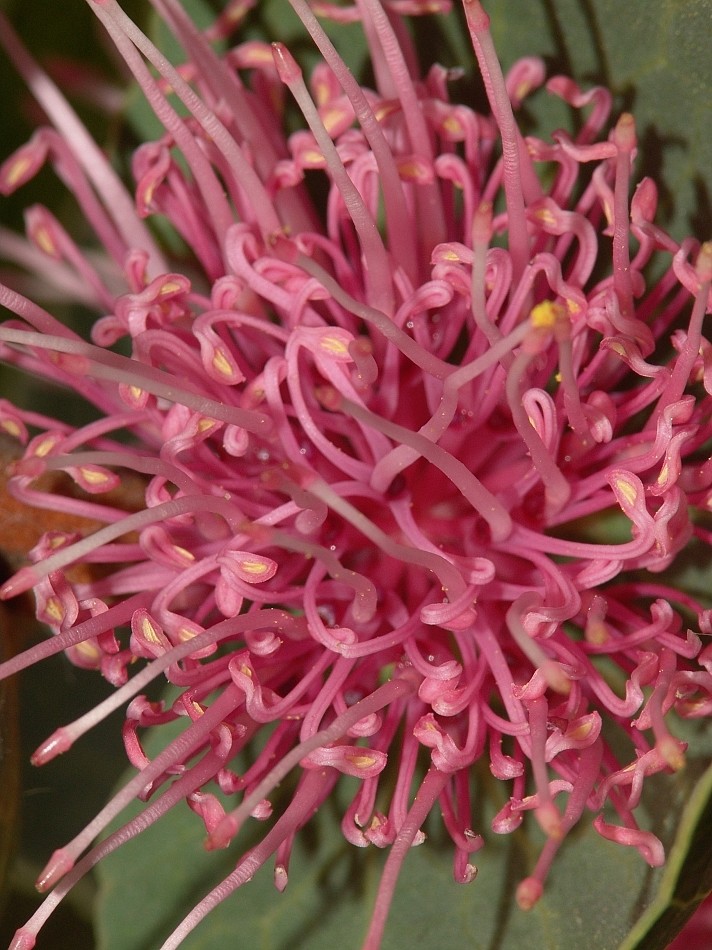Fan-leaf hakea
(Hakea baxteri)

Description
Hakea baxteri, commonly known as fan-leaf hakea, is a shrub in the family Proteaceae native to an area in the Great Southern and Wheatbelt regions of Western Australia. A species noted for its foliage due to its fan-shaped leaves. Hakea baxteri is a non lignotuberous tall upright shrub 1–5 m (3–20 ft) with smooth grey bark. Smaller branches and young leaves have densely matted soft rusty coloured hairs becoming smooth when flowering. The dark green rigid leaves are 4–8 cm (2–3 in) long and 3–9 cm (1–4 in) wide, fan shaped with a toothed upper margin narrowing at the base. The inflorescence consists of 4-8 small strongly scented flowers, light red with a green style. They form in clusters on an obscure stem in the leaf axils or on old wood. The pedicel is 3–4 mm (0.1–0.2 in) long and densely covered with rusty-brown raised hairs continuing onto the 7–9 mm (0.3–0.4 in) long perianth. The large fruit have a roughish surface are globular shaped with a small hooked beak. Hakeas are characterised by their woody fruits, each seed pod containing two winged seeds. Hakea baxteri was first formally described in 1830 by botanist Robert Brown and the description was published in Supplementum primum prodromi florae Novae Hollandiae. Hakea baxteri was named after William Baxter a 19th-century English botanical collector. Hakea baxteri grows in the Stirling Range National Park and nearby locations in heathlands and mallee on sandy-loam and gravel. Hakea baxteri is listed as "not threatened" by Western Australian Government. Plants in the genus Hakea are shrubs or small trees. Some species have flat leaves, whilst others have leaves which are needle-like, in which case they are sometimes divided and sometimes have a groove on the lower surface. The flowers are arranged in groups in leaf axils and are surrounded by bracts when in bud. The flowers have both male and female parts and are borne on a short stalk called a pedicel. The sepals and petals, jointly called tepals, form a curved tube which sometimes splits open as the flower develops. The style is longer than the tepal tube and is curved before its tip is released. When released, the tip of the style is a pollen-presenter. The fruit of hakeas is woody and persists on the plant until burned in a bushfire or until the plant dies. The fruit then splits open to release two winged seeds.
Taxonomic tree:







